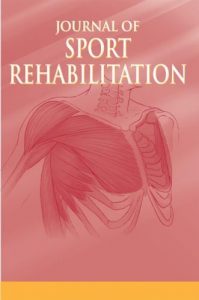Publications

Ultrasonographic and Myotonometric Evaluation of the Shoulder Girdle After an Isokinetic Muscle Fatigue Protocol
Authors: Sebastian Klich, Bogdan Pietraszewski, Matteo Zago, Manuela Galli, Nicola Lovecchio, and Adam Kawczynski
Affiliations: Department of Paralympic Sport, University School of Physical Education in Wrocław, Poland; Politecnico di Milano, Italy; Fondazione Istituto Farmacologico, Milano, Italy; University of Pavia, Italy
Journal: Journal of Sport Rehabilitation - October 2019, Volume 29, Issue 8, Pages 1047–1052 (DOI: 10.1123/jsr.2019-0117)
-
Field & Applications:
- Musculoskeletal rehabilitation
- Sport
Objectives: The aim of the study was to investigate supraspinatus tendon thickness, acromiohumeral distance (AHD), and stiffness/creep measures of the shoulder girdle in overhead asymptomatic athletes in muscle fatigue conditions.
Study design: Observational, case series study. Setting: Biomechanics and motion analysis lab. Participants: Twenty-four male overhead volleyball (n = 8), handball (n = 8), and tennis (n = 8) athletes. All subjects were without shoulder injury history. Main Outcome
Measurements: The subjects were tested for supraspinatus tendon thickness (in short and long axis), AHD using ultrasound scans and stiffness/creep of upper trapezius, infraspinatus, anterior and posterior deltoid, and pectoralis major using the “MyotonPRO” myotonometer device before and immediately after a fatigue protocol. Intervention: The fatigue protocol consisted of 3 sets of 32 maximum isokinetic concentric contractions performing shoulder internal and external rotation at isokinetic speed of 120°/s.
Results: A significant increase in supraspinatus tendon thickness (both in short and long axis) (P = .045 and P = .01, respectively) and a reduction in AHD (P = .01) were found after an isokinetic protocol. The stiffness increased significantly in upper trapezius (P ≤ .01), infraspinatus (P = .003), posterior deltoid (P = .047), and pectoralis major (P = .01), whereas the creep showed a significant decrement for upper trapezius (P = .001) and infraspinatus (P = .003). Conclusion: The present study has demonstrated the postexercise fatigue in overhead athletes. The increase of stiffness (reduction of muscle creep) and tendon thickness (simultaneous to the reduction of AHD) may indicate rotator cuff overloading as a primary intrinsic tendon pathology process.
Keywords: rotator cuff, supraspinatus tendon, AHD, stiffness, creep, external and internal rotation
The present study demonstrated the post-exercise fatigue in overhead athletes. In particular, the increase of stiffness (and then thereduction of muscle creep) and tendon thickness (simultaneous to the reduction of AHD) confirm that overuse syndrome should be associated with intrinsic (tendon vascularity) and extrinsic (tendon compression) factors. Moreover, those alterations in shoulder tendon characteristics and viscoelasticity might be a potential mechanism of impingement risk.


